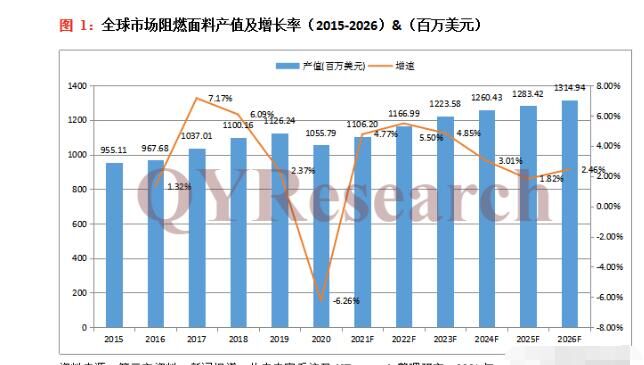Textile fabric flame retardant technology prevents you from “burning”
The flame-retardant technology of textile fabrics prevents you from “burning”
Summer and autumn are the seasons when fires occur frequently in my country, and fires cause countless injuries and losses. It must be admitted that the occurrence of fires is somewhat accidental and even difficult to prevent, but even so, continuous improvement of prevention work is still the most important part of responding to fires and minimizing fire hazards. Safety is no small matter.
In order to prevent the occurrence of fire, in addition to taking fire prevention measures, textiles with flame retardant properties, such as flame retardant fabrics and flame retardant work clothes, can also be used to delay the expansion of the fire and give people time to evacuate or take measures to extinguish the fire. Therefore, the research, development and innovation of flame retardant technology is particularly important.

What are flame retardant materials? General materials, such as polyethylene plastics, etc., are flame-retardant after adding some flame retardants and then re-mixing. Then flame-retardant chemicals are placed in the materials and re-processed to become flame-retardant materials. The characteristics of the materials are The ignition temperature point increases and the rate of combustion slows down. Flame retardant material is a protective material that can prevent combustion without burning easily.
After flame-retardant treatment, textiles can reduce their flammability to varying degrees, significantly delay their combustion efficiency during the combustion process, and can quickly self-extinguish after leaving the fire source, making them less likely to burn. Fabric flame retardant finishing is to fix the flame retardant on the fiber and fabric through chemical bonding, chemical adhesion, adsorption deposition and non-polar van der Waals force combination, so that the fabric obtains flame retardant properties.
Flame-retardant fabrics can be divided into two types in terms of technology: permanent flame-retardant fabrics and finishing flame-retardant fabrics. Among them, permanent flame-retardant fabrics add certain flame retardants to the raw fibers in the fabric, such as polyester, aramid, acrylic, etc., to change the thermal decomposition process of the fibers and promote dehydration and carbonization. Some make the flame retardants decompose. The non-combustible gas is released to cover the surface of the fiber and isolate the air. The permanent flame retardant treatment mainly makes the fabric have a permanent flame retardant effect by improving the thermal stability of the fiber-forming polymer and flame retardant modification of the original yarn. Post-finished flame-retardant fabrics mainly perform surface treatment on the fabric during the post-finishing process of textiles, so that the fabric has flame-retardant properties.
Compared with permanent flame retardant fabrics, the initial flame retardant performance of post-finished flame retardant fabrics is not much different. However, since the flame retardant of post-finished flame retardant fabrics is attached to the surface of the fabric and has not penetrated into the yarn, After being washed or the use time increases, its flame retardant effect will gradually disappear, so the development prospects of permanent flame retardant fabrics are increasingly being discussed.
Flame retardant fabric industry
Flame-retardant fabrics can reduce the flammability of materials in flames and slow down the spread of flames. When the flames are removed, the materials can quickly self-extinguish, reducing burning. According to the flame retardant mechanism, flame retardant fabrics can be divided into post-finished flame retardant fabrics and intrinsic flame retardant fabrics (permanent flame retardant fabrics).
The supply of flame-retardant fabrics in the international market is relatively concentrated. The main manufacturers of flame-retardant fabrics include Milliken, DuPont, Tencate, etc.; domestically, they are mainly small and medium-sized enterprises, and the leading domestic manufacturers are Xinxiang Hushen Special Fabrics, Yulong Textile, and Xinke Protection. In 2020, the top ten manufacturing companies in the country accounted for 56.11% of total sales.
North America, Europe and China are the main production regions of flame retardant fabrics. In 2020, China’s flame-retardant fabric production reached 28.83 million square meters, accounting for 37.07% of global production. Among them, 23.47 million square meters were exported, mainly to Europe, the United States, and the Asia-Pacific region.
Aramid flame retardant fabrics, pure cotton flame retardant fabrics, polyester flame retardant fabrics and acrylic flame retardant fabrics are the current mainstream application areas. At present, most domestic products are mid-to-low-end finished flame-retardant fabrics. However, aramid intrinsic flame-retardant fabrics currently have a small market share because the price is several times that of finished flame-retardant fabrics. In 2020, aramid flame-retardant fabrics accounted for 12.49% of the total output in the Chinese market. With the development of domestic oil and gas resources in the future, the demand for flame-retardant fabric products in the petroleum and chemical industries will increase. In the future, the demand for high-performance intrinsic flame-retardant fabrics will grow faster than finishing flame-retardant fabrics.
Since the outbreak of the epidemic, due to the weakening demand in the petroleum and chemical industries, the demand in the flame-retardant protective clothing industry has also decreased, which has weakened the demand for flame-retardant fabrics. Based on the current global COVID-19 epidemic situation, as well as interviews with flame-retardant fabric industry manufacturers and industry experts, combined with the research of this research group, it is estimated that the global flame-retardant fabric output value growth rate in 2020 will be -6.26%. In 2020, the global flame retardant fabric market reached US$1.056 billion, and is expected to reach US$1.315 billion in 2026, with a compound annual growth rate (CAGR) of 3.73%.

Analysis of upstream raw materials and main downstream applications of flame retardant fabrics

Flame retardant fabrics belong to the flame retardant product industry chain. The upstream raw materials include flame-retardant fibers, etc., and the downstream applications are in the clothing and home textile industries. The supply of upstream raw materials is sufficient, the products are close to the downstream market, and there are certain technologies for producing flame-retardant fabrics.Safety and environmental barriers, production companies rely on the supply of flame-retardant fiber, and the company’s bargaining power is average.






